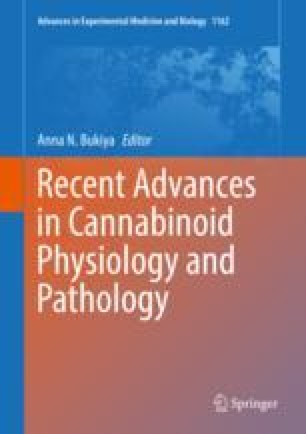 “The opioid epidemic in the United States is a national public health crisis.
“The opioid epidemic in the United States is a national public health crisis.
In recent years, marijuana legalization has been increasingly adopted by state governments as a policy intervention to control the opioid epidemic under the premise that marijuana and opioids are substitutive substances.
The purpose of this systematic review is to synthesize the empirical evidence regarding the impact of state marijuana laws on opioid overdose mortality and other opioid-related health outcomes.
RESULTS:
Of the 16 eligible studies, 4 assessed the association of state marijuana law status with opioid overdose mortality, 7 with prescription opioids dispensed, and the remaining with nonmedical use and opioid-related hospitalizations. Random effects modeling based on pooled data revealed that legalizing marijuana for medical use was associated with a statistically non-significant 8% reduction in opioid overdose mortality (95% confidence interval: - 0.21 to 0.04; p = 0.201) and a 7% reduction in prescription opioids dispensed (95% confidence interval: - 0.13 to - 0.01; p = 0.017). Legalizing marijuana for recreational use was associated with an additional 7% reduction in opioid overdose mortality in Colorado and 6% reduction in opioid prescriptions among fee-for-service Medicaid and managed care enrollees.
CONCLUSIONS:
Legalizing marijuana might contribute to a modest reduction in opioid prescriptions. Evidence about the effect of marijuana legalization on opioid overdose mortality is inconsistent and inconclusive. If any, the effectiveness of state marijuana laws in reducing opioid overdose mortality appears to be rather small and limited to states with operational marijuana dispensaries. It remains unclear whether the presumed benefit of legalizing marijuana in reducing opioid-related harms outweighs the policy’s externalities, such as its impact on mental health and traffic safety.”
https://www.ncbi.nlm.nih.gov/pubmed/31497489
“Legalizing marijuana might contribute to a modest reduction in opioid prescriptions.”
https://injepijournal.biomedcentral.com/articles/10.1186/s40621-019-0213-z

 “The neurodegeneration, neuro-inflammation and mitochondrial dysfunction which occur by methamphetamine (METH) abuse or administration are serious and motivation therapeutic approaches for inhibition of these types of neurodegeneration. As we know, METH through Toll-like receptors (TLRs), specially type 4, and NF-κB signaling pathway causes neuro-inflammation and mitochondrial dysfunction.
“The neurodegeneration, neuro-inflammation and mitochondrial dysfunction which occur by methamphetamine (METH) abuse or administration are serious and motivation therapeutic approaches for inhibition of these types of neurodegeneration. As we know, METH through Toll-like receptors (TLRs), specially type 4, and NF-κB signaling pathway causes neuro-inflammation and mitochondrial dysfunction. “Both types of
“Both types of  “Cannabidiol (CBD) oils are low tetrahydrocannabinol products derived from
“Cannabidiol (CBD) oils are low tetrahydrocannabinol products derived from  “Cocaine abuse continues to be a serious health problem worldwide. Despite intense research there is currently no FDA-approved medication to treat cocaine use disorder. The recent search has been focused on agents targeting primarily the dopamine system, while limited success has been achieved at the clinical level.
“Cocaine abuse continues to be a serious health problem worldwide. Despite intense research there is currently no FDA-approved medication to treat cocaine use disorder. The recent search has been focused on agents targeting primarily the dopamine system, while limited success has been achieved at the clinical level. “The prior medical literature offers little guidance as to how pain relief and side effect manifestation may vary across commonly used and commercially available cannabis product types. We used the largest dataset in the United States of real-time responses to and side effect reporting from patient-directed cannabis consumption sessions for the treatment of pain under naturalistic conditions in order to identify how cannabis affects momentary pain intensity levels and which product characteristics are the best predictors of therapeutic pain relief.
“The prior medical literature offers little guidance as to how pain relief and side effect manifestation may vary across commonly used and commercially available cannabis product types. We used the largest dataset in the United States of real-time responses to and side effect reporting from patient-directed cannabis consumption sessions for the treatment of pain under naturalistic conditions in order to identify how cannabis affects momentary pain intensity levels and which product characteristics are the best predictors of therapeutic pain relief. “As more states enact laws liberalizing marijuana use and the U.S. opioid epidemic surges to unprecedented levels, understanding the relationship between marijuana and opioids is growing increasingly important.
“As more states enact laws liberalizing marijuana use and the U.S. opioid epidemic surges to unprecedented levels, understanding the relationship between marijuana and opioids is growing increasingly important. “Δ9-tetrahydrocannabinol (Δ9-THC), the primary active component in Cannabis sativa preparations such as hashish and marijuana, signals by binding to cell surface receptors. Two types of receptors have been cloned and characterized as cannabinoid (CB) receptors. CB1 receptors (CB1R) are ubiquitously present in the central nervous
“Δ9-tetrahydrocannabinol (Δ9-THC), the primary active component in Cannabis sativa preparations such as hashish and marijuana, signals by binding to cell surface receptors. Two types of receptors have been cloned and characterized as cannabinoid (CB) receptors. CB1 receptors (CB1R) are ubiquitously present in the central nervous 